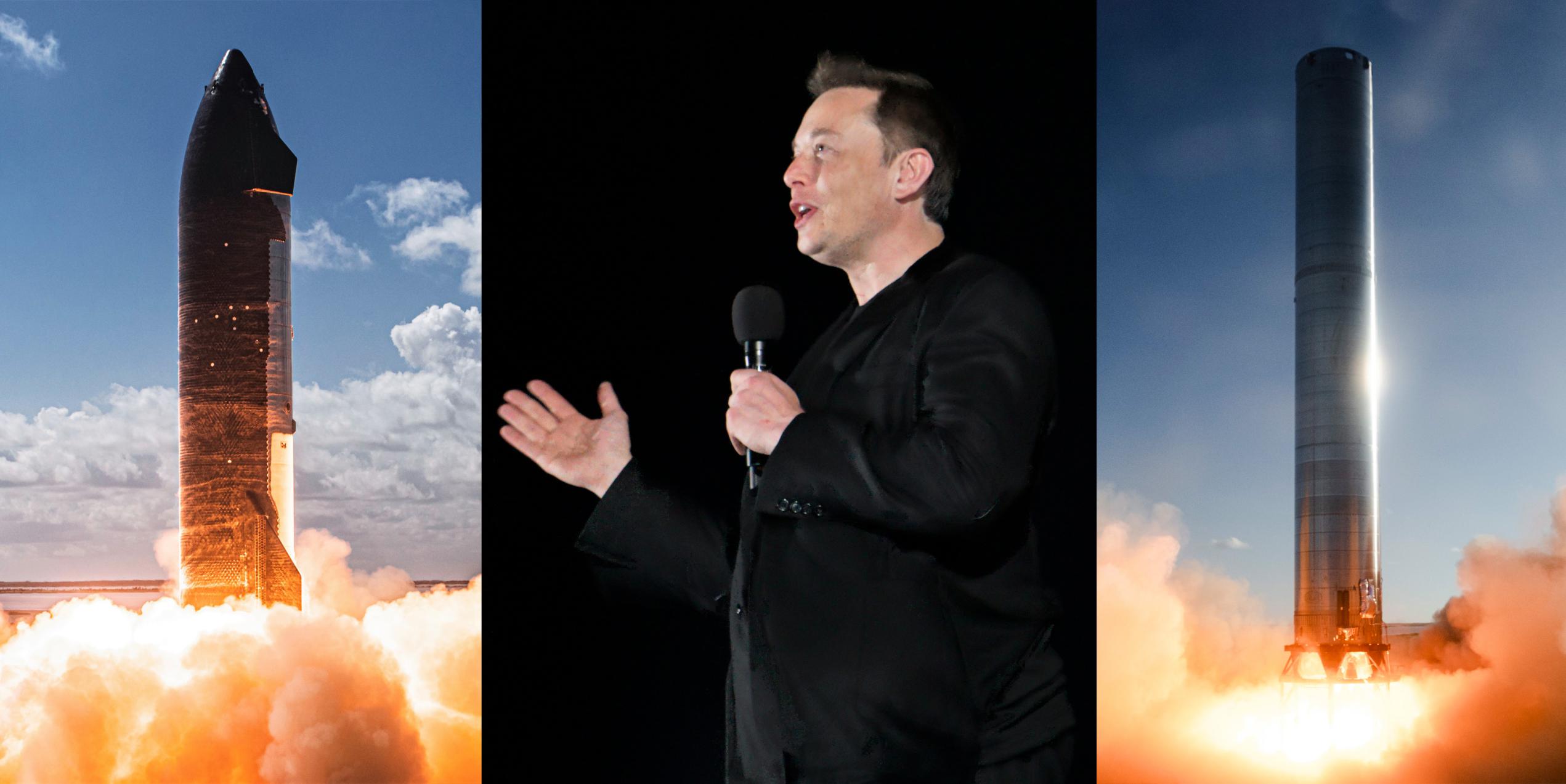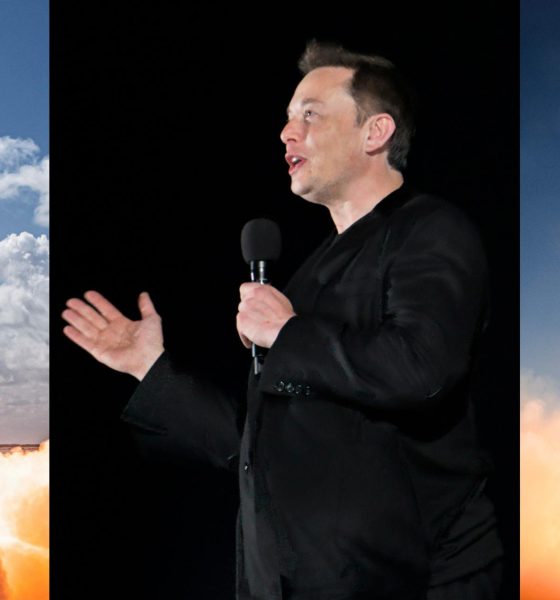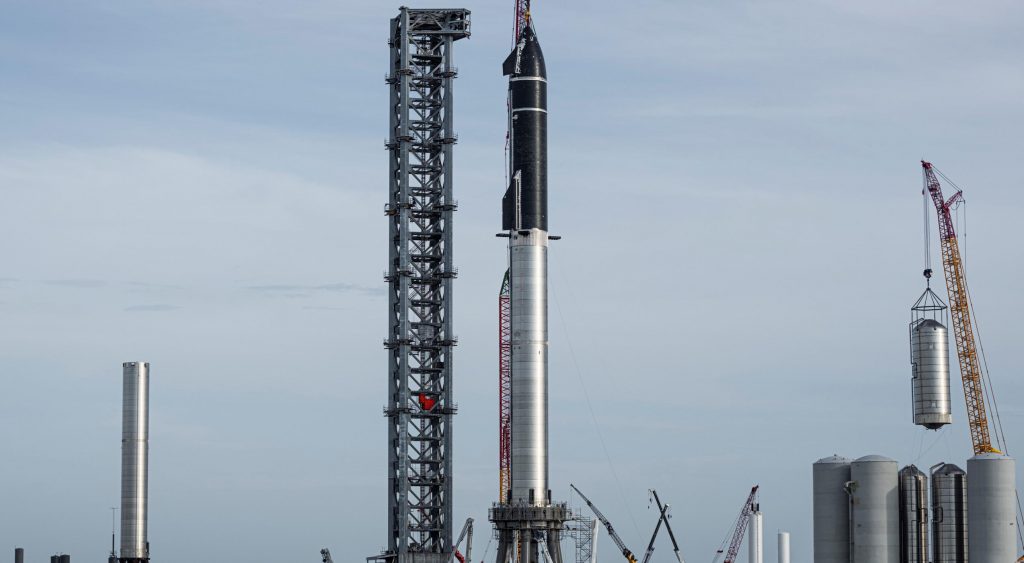

News
SpaceX CEO Elon Musk says “overdue” Starship update is coming soon
CEO Elon Musk says he may finally present the first cohesive update on SpaceX’s next-generation Starship rocket development program in more than two years.
While Musk routinely makes Starship-focused appearances and comments in public or by webcast every 3-6 months, there is a certain brand of update – along the lines of a high-profile tech product reveal – that the SpaceX CEO has only presented four times since Starship’s predecessor was first revealed in September 2016. Accompanied by a relatively detailed slide deck, the four main updates he’s given have provided a large amount of background on the status of Starship development and a variety of next steps – ranging from near-term plans to targets still a decade or more in the future.
Musk has not provided an explicit Starship update in 2020 or 2021. Generally speaking, in the more minor events he’s semi-regularly attended over the last two years, the SpaceX CEO will give a brief overview (sometimes clearly prepared; sometimes not) to a miscellaneous audience that usually isn’t the most familiar with Starship, usually resulting in a great deal of tried and true broad-strokes talking points with a few new details mixed in. Finally, the audience – while undoubtedly well-meaning – asks a number of questions, the vast majority of which have already been asked and answered or could be with Google and a few minutes of basic research.
As with Musk’s (un)prepared remarks, there are usually a few gems of new information left to be found in the rough. The end result: the only true Starship updates are those organized by SpaceX itself with an informed audience and a thoroughly prepared presentation and talking points.
Put a slightly different way, SpaceX has yet to provide a 2016-2019-style Starship presentation since the company actually began building and testing prototypes that approach the final orbital-class ship and booster designs. In those two years, SpaceX has made a truly surreal amount of progress, more or less completing a new prototype every month and flying one of those prototypes every 3-4 months. Most recently, SpaceX completed and static fired a Super Heavy booster prototype, completed and repeatedly static fired the first orbital-class Starship prototype, finished two more Super Heavy boosters, and is on the verge of preparing one of those boosters for the first thorough Super Heavy qualification testing.
If things move in SpaceX’s favor, the Federal Aviation Administration (FAA) could complete an environmental assessment later this month and approve a license for the first one or several orbital Starship launch attempts in early 2022. SpaceX has already begun rapidly building two more orbital-class Starship prototypes and will soon have as many as three ships and two boosters ready for proof testing and an imminent series of orbital test flights. After four successful static fires, one of which fired up all six Raptor engines for the first time, Starship S20 is effectively ready for flight whenever Super Heavy Booster 4 (B4) follows suit.

In short, there are a nearly limitless number of activities and plans that Musk could shed a great deal of light on in an official update presentation. Per Musk, the CEO wants to provide that update as early as December 2021 but no later than January 2022. It’s hard to say if he will actually follow through: more than a year ago, Musk promised a Starship update in October 2020, and that’s not the only time in the last two years that the CEO has stated that he’d present a new update soon. It’s possible that Musk is waiting on a specific Starbase hardware milestone before presenting his long-awaited update – perhaps the completion of Super Heavy B4 qualification testing or the next full-stack milestone, in which Starship S20 (now proofed and ready for flight) will be installed on top of the booster for the second time.

News
Tesla aims to combat common Full Self-Driving problem with new patent
Tesla writes in the patent that its autonomous and semi-autonomous vehicles are heavily reliant on camera systems to navigate and interact with their environment.

Tesla is aiming to combat a common Full Self-Driving problem with a new patent.
One issue with Tesla’s vision-based approach is that sunlight glare can become a troublesome element of everyday travel. Full Self-Driving is certainly an amazing technology, but there are still things Tesla is aiming to figure out with its development.
Unfortunately, it is extremely difficult to get around this issue, and even humans need ways to combat it when they’re driving, as we commonly use sunglasses or sun visors to give us better visibility.
Cameras obviously do not have these ways to fight sunglare, but a new patent Tesla recently had published aims to fight this through a “glare shield.”
Tesla writes in the patent that its autonomous and semi-autonomous vehicles are heavily reliant on camera systems to navigate and interact with their environment.

The ability to see surroundings is crucial for accurate performance, and glare is one element of interference that has yet to be confronted.
Tesla described the patent, which will utilize “a textured surface composed of an array of micro-cones, or cone-shaped formations, which serve to scatter incident light in various directions, thereby reducing glare and improving camera vision.”

The patent was first spotted by Not a Tesla App.
The design of the micro-cones is the first element of the puzzle to fight the excess glare. The patent says they are “optimized in size, angle, and orientation to minimize Total Hemispherical Reflectance (THR) and reflection penalty, enhancing the camera’s ability to accurately interpret visual data.”
Additionally, there is an electromechanical system for dynamic orientation adjustment, which will allow the micro-cones to move based on the angle of external light sources.
This is not the only thing Tesla is mulling to resolve issues with sunlight glare, as it has also worked on two other ways to combat the problem. One thing the company has discussed is a direct photon count.
CEO Elon Musk said during the Q2 Earnings Call:
“We use an approach which is direct photon count. When you see a processed image, so the image that goes from the sort of photon counter — the silicon photon counter — that then goes through a digital signal processor or image signal processor, that’s normally what happens. And then the image that you see looks all washed out, because if you point the camera at the sun, the post-processing of the photon counting washes things out.”
Future Hardware iterations, like Hardware 5 and Hardware 6, could also integrate better solutions for the sunglare issue, such as neutral density filters or heated lenses, aiming to solve glare more effectively.
Elon Musk
Delaware Supreme Court reinstates Elon Musk’s 2018 Tesla CEO pay package
The unanimous decision criticized the prior total rescission as “improper and inequitable,” arguing that it left Musk uncompensated for six years of transformative leadership at Tesla.

The Delaware Supreme Court has overturned a lower court ruling, reinstating Elon Musk’s 2018 compensation package originally valued at $56 billion but now worth approximately $139 billion due to Tesla’s soaring stock price.
The unanimous decision criticized the prior total rescission as “improper and inequitable,” arguing that it left Musk uncompensated for six years of transformative leadership at Tesla. Musk quickly celebrated the outcome on X, stating that he felt “vindicated.” He also shared his gratitude to TSLA shareholders.
Delaware Supreme Court makes a decision
In a 49-page ruling Friday, the Delaware Supreme Court reversed Chancellor Kathaleen McCormick’s 2024 decision that voided the 2018 package over alleged board conflicts and inadequate shareholder disclosures. The high court acknowledged varying views on liability but agreed rescission was excessive, stating it “leaves Musk uncompensated for his time and efforts over a period of six years.”
The 2018 plan granted Musk options on about 304 million shares upon hitting aggressive milestones, all of which were achieved ahead of time. Shareholders overwhelmingly approved it initially in 2018 and ratified it once again in 2024 after the Delaware lower court struck it down. The case against Musk’s 2018 pay package was filed by plaintiff Richard Tornetta, who held just nine shares when the compensation plan was approved.
A hard-fought victory
As noted in a Reuters report, Tesla’s win avoids a potential $26 billion earnings hit from replacing the award at current prices. Tesla, now Texas-incorporated, had hedged with interim plans, including a November 2025 shareholder-approved package potentially worth $878 billion tied to Robotaxi and Optimus goals and other extremely aggressive operational milestones.
The saga surrounding Elon Musk’s 2018 pay package ultimately damaged Delaware’s corporate appeal, prompting a number of high-profile firms, such as Dropbox, Roblox, Trade Desk, and Coinbase, to follow Tesla’s exodus out of the state. What added more fuel to the issue was the fact that Tornetta’s legal team, following the lower court’s 2024 decision, demanded a fee request of more than $5.1 billion worth of TSLA stock, which was equal to an hourly rate of over $200,000.
Delaware Supreme Court Elon Musk 2018 Pay Package by Simon Alvarez
News
Tesla Cybercab tests are going on overdrive with production-ready units
Tesla is ramping its real-world tests of the Cybercab, with multiple sightings of the vehicle being reported across social media this week.

Tesla is ramping its real-world tests of the Cybercab, with multiple sightings of the autonomous two-seater being reported across social media this week. Based on videos of the vehicle that have been shared online, it appears that Cybercab tests are underway across multiple states.
Recent Cybercab sightings
Reports of Cybercab tests have ramped this week, with a vehicle that looked like a production-ready prototype being spotted at Apple’s Visitor Center in California. The vehicle in this sighting was interesting as it was equipped with a steering wheel. The vehicle also featured some changes to the design of its brake lights.
The Cybercab was also filmed testing at the Fremont factory’s test track, which also seemed to involve a vehicle that looked production-ready. This also seemed to be the case for a Cybercab that was spotted in Austin, Texas, which happened to be undergoing real-world tests. Overall, these sightings suggest that Cybercab testing is fully underway, and the vehicle is really moving towards production.
Production design all but finalized?
Recently, a near-production-ready Cybercab was showcased at Tesla’s Santana Row showroom in San Jose. The vehicle was equipped with frameless windows, dual windshield wipers, powered butterfly door struts, an extended front splitter, an updated lightbar, new wheel covers, and a license plate bracket. Interior updates include redesigned dash/door panels, refined seats with center cupholders, updated carpet, and what appeared to be improved legroom.
There seems to be a pretty good chance that the Cybercab’s design has been all but finalized, at least considering Elon Musk’s comments at the 2025 Annual Shareholder Meeting. During the event, Musk confirmed that the vehicle will enter production around April 2026, and its production targets will be quite ambitious.








